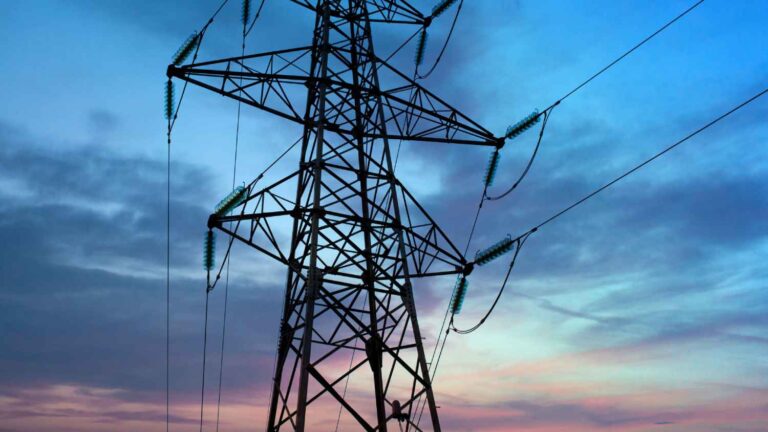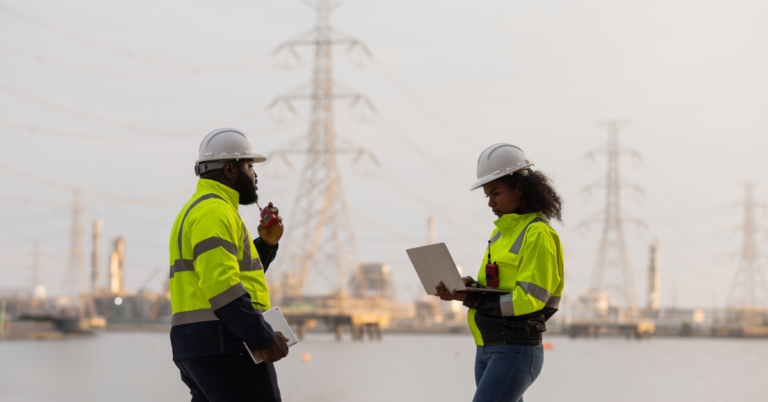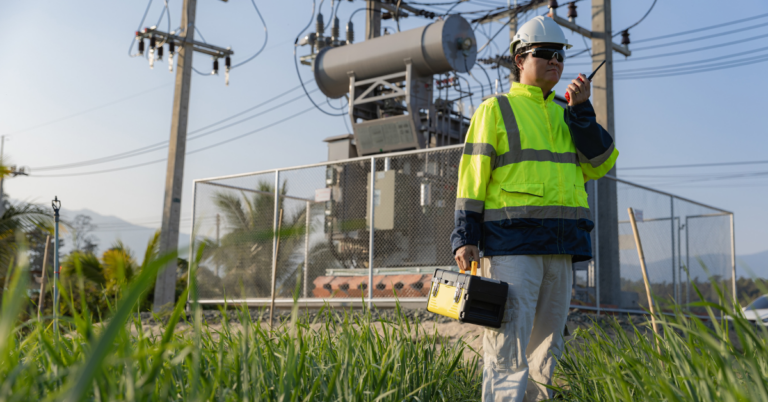For companies in the utility sector, safety isn’t just a requirement—it’s a responsibility. Every day, workers operate in high-risk environments, facing everything from electrical hazards to extreme weather. While industry regulations and safety protocols help mitigate risks, they only go so far. The difference between a workplace that just follows the rules and one that truly protects its employees comes down to one thing: safety culture.
A strong utility safety culture isn’t about checking boxes or meeting compliance standards. It’s about creating an environment where safety is a shared commitment—where employees actively look out for each other, leadership prioritizes safety beyond the bare minimum, and near-misses are seen as learning opportunities rather than close calls to ignore. When this mindset becomes ingrained in daily operations, incident rates drop, teams work more efficiently, and companies gain a reputation for reliability and responsibility.
Safety Culture vs. Safety Policies: The Real Difference
Every utility company has safety policies. Written procedures dictate what gear to wear, what protocols to follow, and how to respond in case of an emergency. But policies alone don’t prevent accidents—people do.
A workplace can have the most detailed safety guidelines, but if employees don’t feel empowered to speak up, if shortcuts are tolerated to meet deadlines, or if leadership views safety as a formality rather than a core value, the risk of workplace incidents remains high. A strong utility safety culture makes safety second nature. It ensures that:
- Employees don’t hesitate to report hazards, no matter how small.
- Everyone—from senior leadership to field workers—sees safety as their responsibility.
- Near-misses lead to meaningful changes, rather than being brushed aside.
- Efficiency is never prioritized over worker well-being.
The most safety-conscious workplaces aren’t the ones with the thickest manuals. They’re the ones where every employee takes ownership of safety, not because they have to, but because they want to.
What the Numbers Say: The Impact of a Strong Safety Culture
Safety culture isn’t just a concept—it’s measurable. And when it’s strong, the numbers reflect it.
In 2024, Think Power Solutions achieved a Total Recordable Incident Rate (TRIR) of 0.00. This means that across all operations, there were zero recordable workplace injuries.
For an industry where hazards are an everyday reality, this kind of achievement isn’t just rare—it’s a clear sign that safety is more than just a policy at Think Power Solutions. It’s a way of working.
Looking beyond a single year, Think Power Solutions has maintained a three-year average TRIR of 0.54, significantly lower than the industry benchmark. While a perfect year might be dismissed as an outlier, consistently low incident rates over multiple years indicate a workplace where safety is ingrained in the company’s culture.
Companies that sustain a low TRIR don’t just prevent injuries—they also benefit from:
- Lower operational disruptions
- Improved workforce retention
- Stronger regulatory compliance
What Makes a Strong Utility Safety Culture?
Building a workplace where safety is automatic takes time. It’s not about rolling out more rules or conducting more training sessions—it’s about making safety a shared priority at every level of the company.
Leadership Sets the Standard
Safety culture starts at the top. If management treats safety as an afterthought, employees will too. But when leaders make it clear—through their actions, not just their words—that safety matters, the entire workforce follows suit.
That means being present in the field, listening to workers’ concerns, addressing hazards before they turn into incidents, and ensuring safety discussions happen regularly—not just after something goes wrong.
Employee Buy-In is Key
Even the best leadership efforts won’t make a difference if employees see safety as a set of rules imposed on them rather than something they play an active role in. Companies with strong safety cultures create an environment where employees:
- Feel comfortable reporting safety concerns without fear of blame or retaliation.
- Hold each other accountable for safe practices.
- Take pride in maintaining a safe workplace, rather than seeing it as extra work.
This doesn’t happen overnight, but when employees feel like their safety is truly valued—not just as a talking point, but in real actions—it changes how they approach risk.
Proactive, Not Reactive
Many companies focus on safety only after an incident happens. But the best workplaces focus on prevention rather than reaction. That means:
- Tracking leading indicators like near-misses and hazard reports—not just injury statistics.
- Encouraging early reporting so small risks don’t turn into serious accidents.
- Using real-world data to continuously improve safety processes.
A reactive approach to safety culture means waiting for something to go wrong. A proactive approach means preventing things from going wrong in the first place.
Final Thoughts: Safety Culture is an Investment, Not a Regulation
At its core, utility safety culture isn’t about rules and regulations—it’s about people. It’s about ensuring that every worker, from the field to the office, understands that safety isn’t just a policy—it’s a shared responsibility.
A truly safe workplace isn’t built on compliance checklists alone. It’s built on trust, accountability, and a mindset where safety is instinctive, not just instructed. It’s the difference between simply following procedures and actively looking out for one another—speaking up, stepping in, and making the right decisions, even when no one is watching.
For companies striving to improve safety performance, the solution isn’t in more paperwork or stricter policies. It’s in fostering a culture where safety is second nature—where it’s woven into daily decisions, where risks are addressed before they become problems, and where every worker knows that their well-being is the highest priority.
Because at the end of the day, safety isn’t just about avoiding incidents—it’s about making sure that every person goes home the same way they arrived. Every single day.



